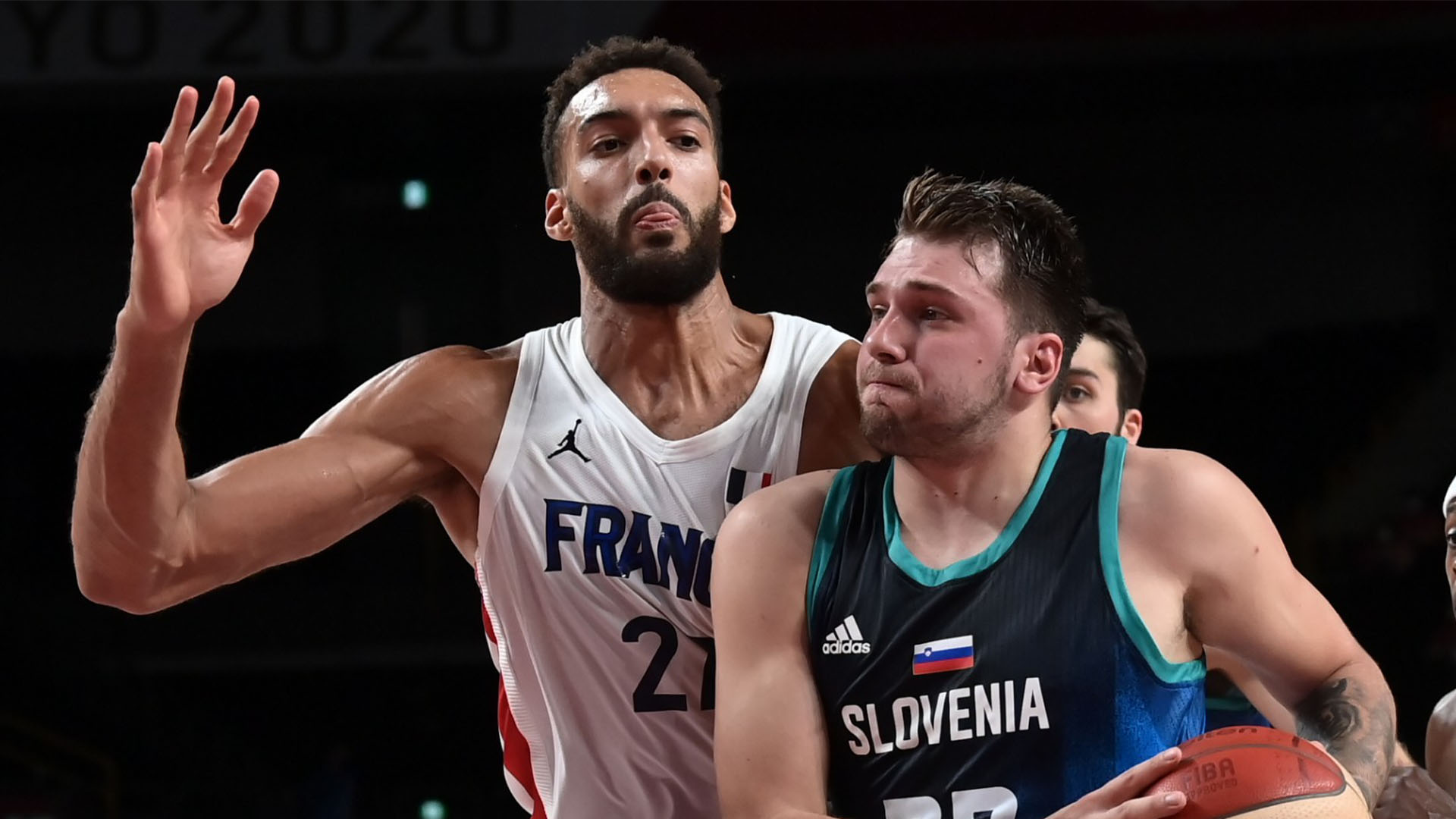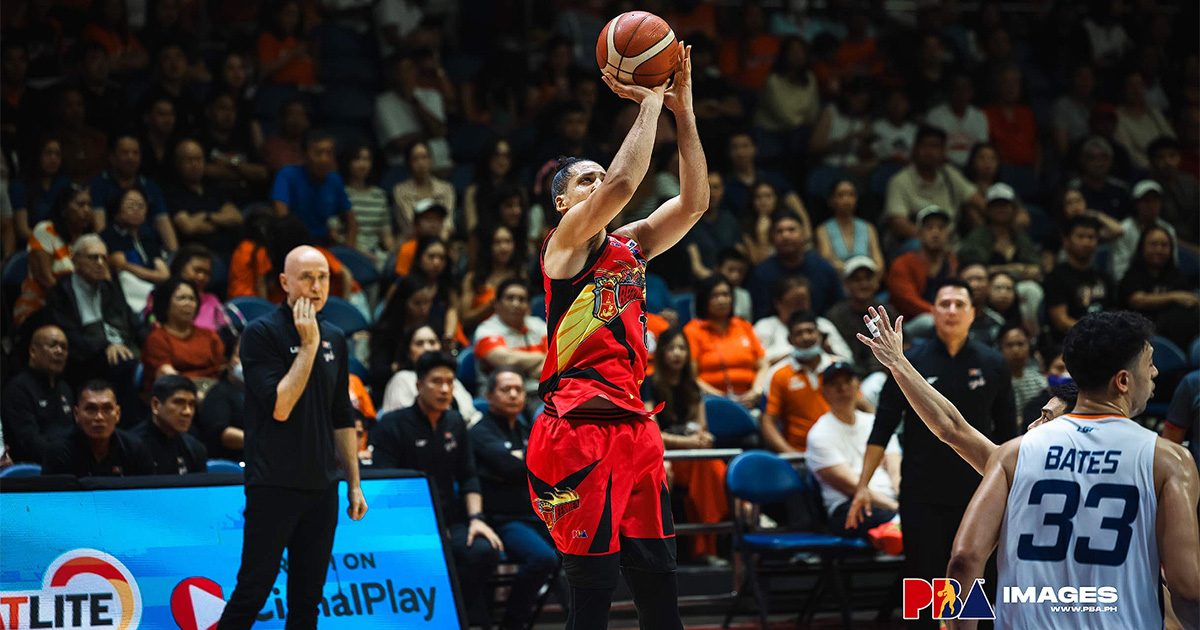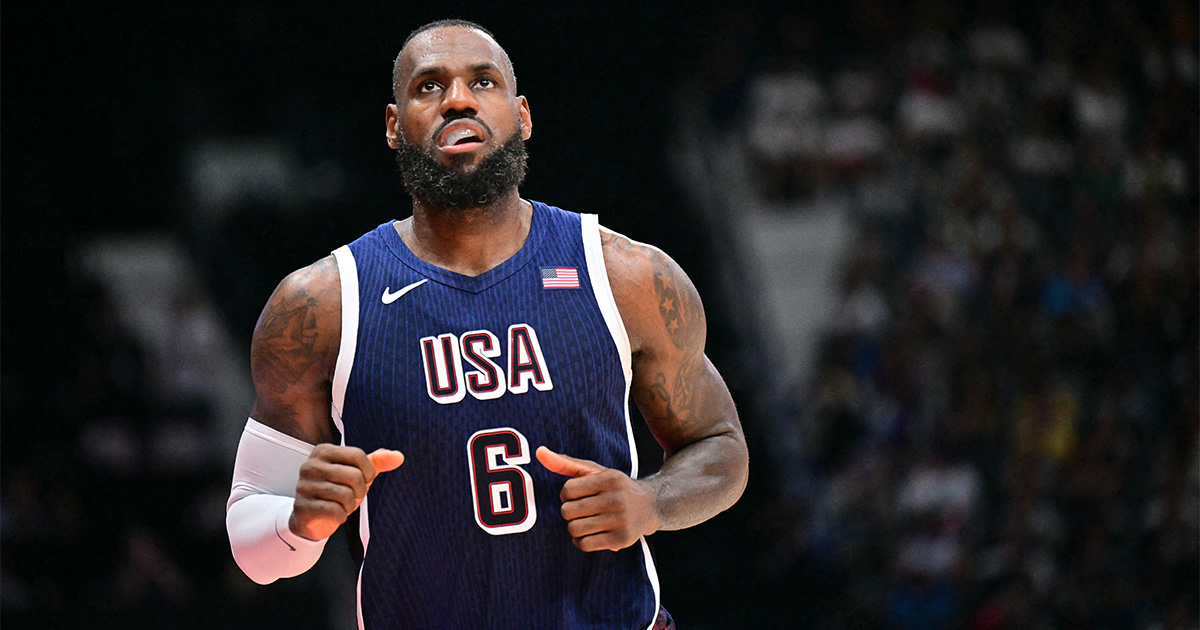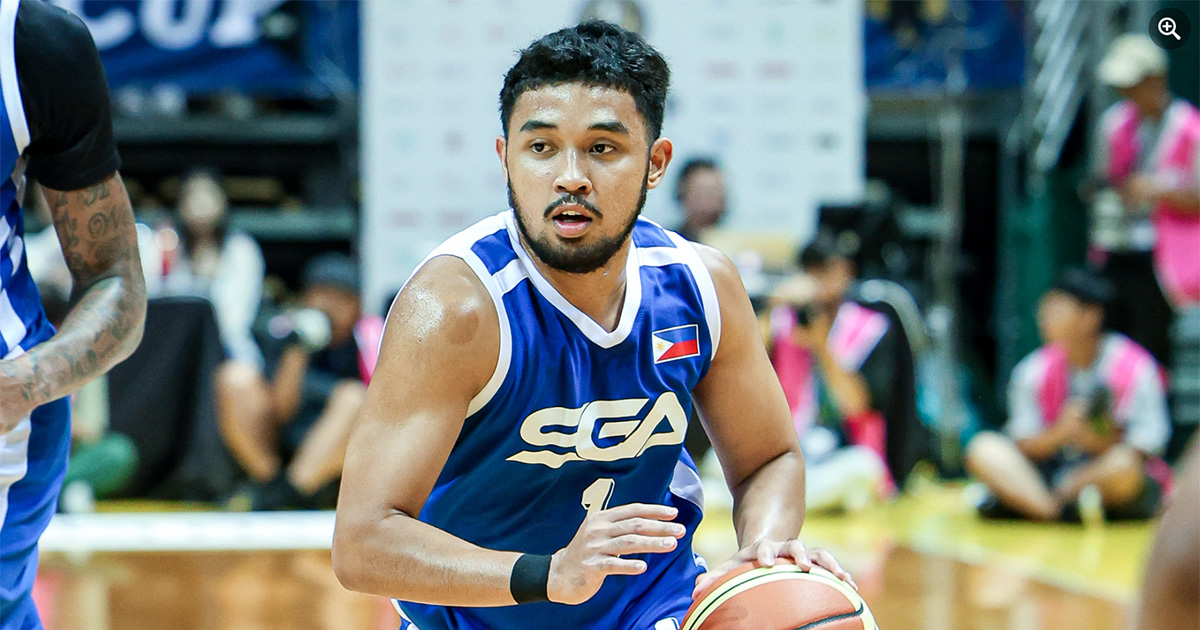Even if Gilas Pilipinas did not participate in the recently concluded Olympic Men’s Basketball competition, Filipinos still tuned in to watch their favorite NBA stars slug it out for international glory.
While they witnessed Team USA take home its fourth straight gold medal, it was perhaps the Americans’ toughest road to gold since their infamous bronze medal finish in the 2004 Athens Olympics. Apart from their opening loss to France, the 25.4 point average margin of victory does not tell the entire story.
The US could not create separation from their opponents until the second half and while that is partly due to the world getting better, the more valuable insight here is how America’s opponents were able to stay within striking distance until Team USA’s old reliables in Kevin Durant, Jayson Tatum, and Jrue Holiday took over.
A confluence of factors led to the narrowing of the gap between the Americans and the rest of the world but there were a few points that can be emphasized and emulated by Philippine basketball. Sure, Team USA was a hastily assembled yet talented bunch, but the degree of vulnerability was something not seen since professionals were allowed to compete in 1992.
Ball movement was very much evident in the Olympics as teams made efforts to find the open man to get the best shot possible. A concerted effort to get the ball around somewhat minimized the disadvantages for the likes of Slovenia and Italy when facing more experienced and talented foes in France and Australia. Against the US, the French also utilized ball movement to stymie the American defense that was still getting used to one another.
Based on the passing numbers from the PBA, the table below shows that there are some indications that ball movement remains a huge part of the offense. Assists as a whole may have gone down (along with field goals made) in the PBA since 2019, but the assist percentage (AST%) has gone up again in 2021. While the number itself barely moves the needle, the fact that three out of the five shots made in the PBA are assisted means that Filipino basketball players can thrive off a pass-happy scheme.
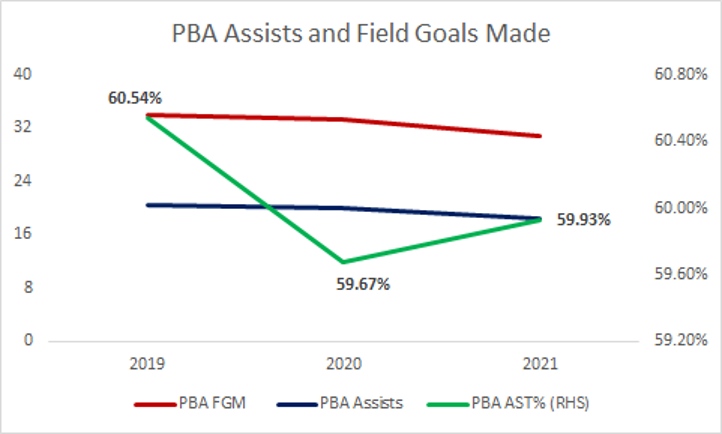
Note: The stats used came from the PBA Philippine Cup due to it being the only conference played in 2020 and 2021. As of this writing, the 2021 PBA Philippine Cup has been put on hold due to the Enhanced Community Quarantine in Metro Manila.
This doesn’t necessarily mean that offense predicated on isolation should be eradicated. Sometimes finding the right mismatch and operating in isolation still has its merits, especially when there is a weak link in the defense. Diversifying the offensive mix, however, helps especially when faced with larger competition. It keeps the defense on their toes and ensures that the goal of finding the best shot possible (even if it’s an isolation mismatch) is achieved.

Related to ball movement comes a “whole-of-team” approach where everyone is actively involved with the play. The best type of offense is when everyone is moving, even if they never get the ball in that possession. The likes of France and Australia used a combination of ball screens and cuts (both from set plays and spontaneous reads) to get shooters open and create mismatches in the post.
When players on the court are standing around while the others are running sets, it makes the offense more predictable and gives defenses an easier time in terms of targeting specific players.
A particular instance that comes to mind is that of the James Harden-led Houston Rockets, where defenses focused on keeping Harden in the corners in order to keep him disengaged from the offense and make things virtually a 4-on-4 game.
The run-and-gun offense is popular in the Philippines considering its fast pace and how Philippine basketball idolizes the American style of play more than they care to admit. It is, however, an offense easy to stop considering how defenses would simply need to win the numbers game in transition and ensure that the best options in transition are covered. It also helps if the best player on the floor has an off-night.
For it to thrive in the international game, run-and-gun must be nuanced. Fast-paced plays could still be run but making it less predictable will be crucial for its staying power. This is especially helpful when everyone on the court is a threat. This could either mean that all five players can shoot the ball or can easily get to spots where they can score. The Philippines is adapting to that as even big men are developing a perimeter game.
On fastbreaks, it could be as simple as ensuring the trailing man is a shooter or ensuring the ball handler heads to a spot where he wont be trapped. From there, he can run multiple options especially with those running back to the other side of the court. This also includes developing fastbreak scenarios that disguise the true scoring options since not everyone can boast having a Giannis Antetokounmpo that can take it all the way for the score.
This “whole-of-team” approach also applies to the defensive side of the ball, where teamwork will help in perfectly executing defensive schemes. Individual defense is not for everyone and even for those who are adept at it can admit that doing so for 30 minutes can be draining. That’s why defense and certain traps and coverages not only help conserve energy but also avoid foul trouble.
An understanding of opponents’ tendencies also comes into play here, as defending them will then not be akin to flying blind. Philippine teams across all levels are well-acquainted with schemes and even at the elementary level are taught different presses and traps. Incorporating that previous experience with more halfcourt schemes should then be much easier.

Of course, the Philippines is no stranger to some of these principles as Gilas national program director Tab Baldwin has laid the foundation for this over the past two years with the national team and even at the collegiate level with the Ateneo Blue Eagles since 2016.
The current iteration of Gilas that competed in the FIBA Asia Cup Qualifiers and the Olympic Qualifying tournament had already shown some of the aforementioned traits and racked up some solid wins as a result.
The effectiveness of Baldwin’s system has allowed Gilas to stay with some of the highly-ranked teams like Serbia despite fielding a team composed mostly of players who just finished competing at the collegiate level.
At the grassroots level, it’s not just about teaching the players, the coaches have to buy into the system too. Baldwin was able to achieve success despite not having the best players at his disposal and the principles from his system negated any supposed disadvantage. If three straight UAAP titles and competitive games at the international level won’t be enough to convince these coaches, I don’t know what will.
The avid fandom Filipinos have for basketball should rightly be more about knowing what the X’s and O’s. Understanding the concepts and nuances of what makes the Davids have a shot at taking down the Goliaths could help a nation that last qualified for basketball in the Olympics back in 1972 return to arguably the biggest stage in international basketball.

